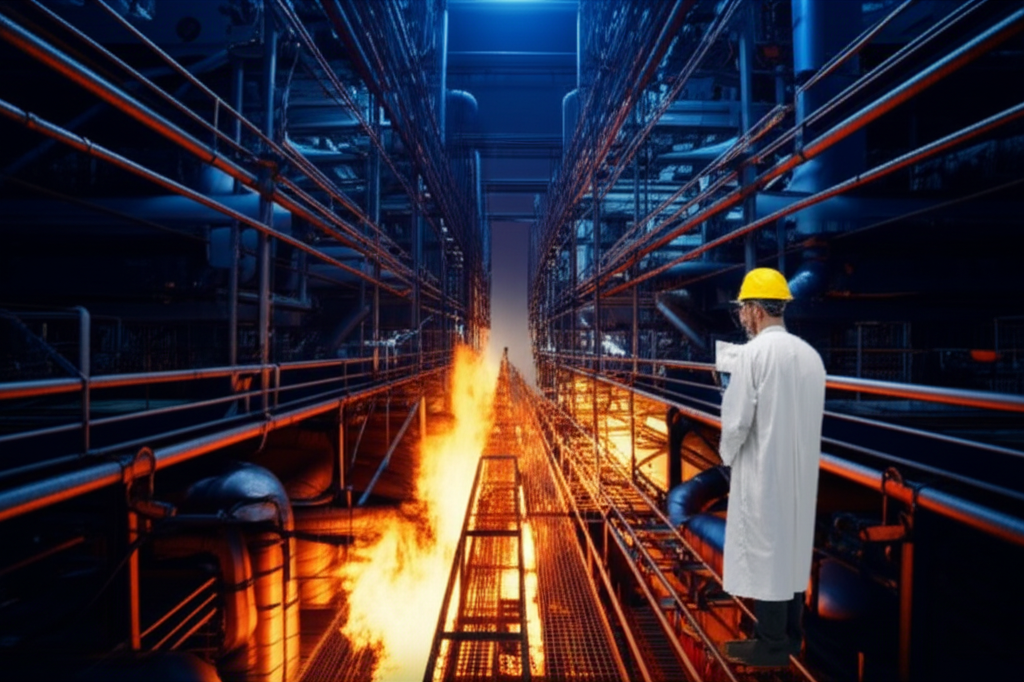A novel synthesis process for 2,4-Dichlorotoluene (2,4-DCT), a crucial fine chemical intermediate widely utilized in the manufacture of pesticides, pharmaceuticals, and dyes, promises significant improvements in efficiency, yield, and environmental impact over conventional methods. Existing industrial routes frequently face challenges such as low product selectivity, excessive generation of unwanted byproducts like trichloro- and tetrachlorotoluene, high catalyst consumption, substantial acidic wastewater streams, and complex, costly operation. These limitations directly affect the economic viability and sustainability of 2,4-DCT production, which sees increasing global demand.
This innovative approach centers on a meticulously engineered chloride catalyst supported on L-type zeolite. The catalyst preparation involves multiple, carefully controlled stages to ensure optimal metal chloride (ferric chloride, zinc chloride, aluminum chloride, titanium chloride) deposition onto the zeolite framework. Initial electrolysis of precise mixtures of these metal chloride solutions creates acidic precursors. The L-type zeolite undergoes sequential impregnation cycles in these electrolyzed solutions under strict temperature and time control, followed by extended maturation periods and final drying. This sophisticated procedure enhances the dispersion and adhesion of the catalytic metals, significantly augmenting the catalyst's activity and selectivity for the desired monochlorination pattern.
The core chlorination reaction employs para-chlorotoluene (PCT) as the starting material. In a reactor vessel, PCT is combined with the specially prepared L-zeolite catalyst. Chlorine gas is then introduced under optimized conditions: a critical molar ratio of PCT to Cl₂ between 1:0.5 and 1:0.7, a catalyst-to-PCT weight ratio of 1:0.8 to 1:1.3, and a deliberately maintained low reaction temperature within the 38°C to 46°C range for a duration of 16-19 hours. This mild temperature profile is instrumental in suppressing the formation of highly chlorinated byproducts. The generated hydrogen chloride gas is efficiently recovered during the reaction, mitigating corrosive emissions and offering a value stream. The reaction mixture is subsequently treated with a crystallized sodium carbonate solution containing water of hydration to neutralize residual acids, and solid residues, including spent catalyst components, are collected for potential regeneration or safe disposal.
Purification and isolation of the target 2,4-DCT demand a rigorous multi-stage fractional distillation sequence. The crude post-reaction mixture undergoes separation through four consecutive distillation columns. Initial distillation separates lighter components overhead. The bottom product from this first column advances to a second column, again separating its overhead stream. The bottom product (second still residue) progresses to a third column. The residue collected from this third distillation (heavier than the desired product at this stage) is then processed in a fourth column. Crucially, it is the carefully collected bottom product from the fourth distillation step that delivers purified 2,4-Dichlorotoluene. This intricate series meticulously isolates 2,4-DCT from structurally similar isomers, primarily 3,4-Dichlorotoluene and other chlorinated derivatives generated in trace amounts, resulting in exceptional product purity.
The overall benefits of this integrated process are substantial. The engineered L-zeolite catalyst demonstrates superior activity, enabling the reaction to proceed efficiently at lower temperatures. This, combined with the optimal reactant ratios, drastically enhances selectivity towards 2,4-DCT while minimizing energy-intensive deep chlorination. Independent testing, using variations within the disclosed process parameters, yielded consistent, impressive results: product yields exceeding 68%, often reaching near 70%; chlorine utilization efficiency exceeding 96%; and final product purity reaching 99.9%. Furthermore, the process actively recovers HCl gas for potential use or sale, captures residual acidity with alkaline treatment for safer disposal, minimizes harmful effluents, and isolates byproducts like 3,4-DCT for potential reclamation.
This breakthrough represents a tangible advancement in sustainable chemical manufacturing for a vital industrial intermediate. By delivering enhanced reaction selectivity, significantly higher product yields, efficient resource utilization, and a reduction in problematic waste streams, this new synthesis method provides a commercially attractive and environmentally conscious solution to meet the growing market demand for high-purity 2,4-Dichlorotoluene. The combination of advanced catalyst design, optimized reaction control, and sophisticated purification delivers a robust process readily adaptable for industrial scale-up.

Manufacturing Facilities






Professional Export Experience
to Global Customers

1. 20 years of R&D, manufacturing and sales experience, serving customers in 60 countries and regions around the world;
2. Own R&D laboratory, pilot platform and large-scale production workshop, which can meet the audit requirements of global customers;
3. We can satisfy customers' perfect transition from small scale lab requirements (gram level) to commercialization requirements (hundred tons level).
A: We don't have Minimum Order Quantity, exact quantity should be provided before quotation for us to calculate the exact cost.
A: We don't provide free samples due to lots of request and expensive international courier's cost, we can deduct the sample charge after commercial order placed.
A: Our payment terms: Small or sample order: T/T IN ADVANCE. Commercial order: First order should be by T/T IN ADVANCE or L/C at sight, and following orders T/T 30~90days is acceptable subject to approval of credit application.